This Week in Labor History
October 30
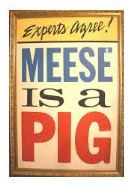 Ed Meese, attorney general in the Ronald Reagan administration, urges employers to begin spying on workers “in locker rooms, parking lots, shipping and mail room areas and even the nearby taverns” to try to catch them using drugs – 1986
Ed Meese, attorney general in the Ronald Reagan administration, urges employers to begin spying on workers “in locker rooms, parking lots, shipping and mail room areas and even the nearby taverns” to try to catch them using drugs – 1986
The fishing boat Andrea Gail, out of Gloucester, Mass., is caught in ferocious storm and lost at sea with her crew of six. The event inspired the book, “The Perfect Storm,” by Sebastian Junger, and a film by the same name. The city of Gloucester has lost more than 10,000 whalers and fishermen to the sea over its 350-year history – 1991
October 31
 George Henry Evans publishes the first issue of the Working Man’s Advocate, “edited by a Mechanic” for the “useful and industrious classes” in New York City. He focused on the inequities between the “portion of society living in luxury and idleness” and those “groaning under the oppressions and miseries imposed on them.” – 1829
George Henry Evans publishes the first issue of the Working Man’s Advocate, “edited by a Mechanic” for the “useful and industrious classes” in New York City. He focused on the inequities between the “portion of society living in luxury and idleness” and those “groaning under the oppressions and miseries imposed on them.” – 1829
Tennessee sends in leased convict laborers to break a coal miners strike in Anderson County. The miners revolted, burned the stockades, and sent the captured convicts by train back to Knoxville – 1891
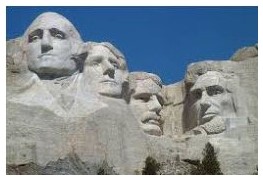 After 14 years of labor by 400 stone masons, the Mt. Rushmore sculpture is completed in Keystone, S.D.- 1941
After 14 years of labor by 400 stone masons, the Mt. Rushmore sculpture is completed in Keystone, S.D.- 1941
The Upholsterers Int’l Union merges into the United Steelworkers – 1949
Int’l Alliance of Bill Posters, Billers & Distributors of the United States & Canada surrenders its AFL-CIO charter and is disbanded – 1971
November 01
In the nation’s first general strike for a 10-hour day, 300 armed Irish longshoremen marched through the streets of Philadelphia calling on other workers to join them. Some 20,000 did, from clerks to bricklayers to city employees and other occupations. The city announced a 10-hour workday within the week; private employers followed suit three weeks later – 1835
 (Strikes Around the World: Are strikes going out of fashion or are they an inevitable feature of working life? This is a longstanding debate. The much-proclaimed ‘withering away of the strike’ in the 1950s was quickly overturned by the ‘resurgence of class conflict’ in the late 1960s and 1970s. The period since then has been characterized as one of ‘labor quiescence’. Commentators again predict the strike’s demise, at least in the former heartlands of capitalism.)
(Strikes Around the World: Are strikes going out of fashion or are they an inevitable feature of working life? This is a longstanding debate. The much-proclaimed ‘withering away of the strike’ in the 1950s was quickly overturned by the ‘resurgence of class conflict’ in the late 1960s and 1970s. The period since then has been characterized as one of ‘labor quiescence’. Commentators again predict the strike’s demise, at least in the former heartlands of capitalism.)
Thirty-seven Black striking Louisiana sugar workers are murdered when Louisiana militia, aided by bands of “prominent citizens,” shoot unarmed workers trying to get a dollar-per-day wage. Two strike leaders are lynched – 1887
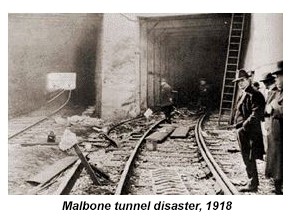 Malbone tunnel disaster in New York City; inexperienced scab motorman crashes five-car train during strike, 97 killed, 255 injured – 1918
Malbone tunnel disaster in New York City; inexperienced scab motorman crashes five-car train during strike, 97 killed, 255 injured – 1918
Some 400,000 soft coal miners strike for higher wages and shorter hours – 1919
United Stone & Allied Products Workers of America merge with United Steelworkers of America – 1972
The UAW begins what was to become a successful 172-day strike against International Harvester. The union turned back company demands for weakened work rules, mandatory overtime – 1979
Honda assembles the first-ever Japanese car manufactured in a U.S. plant, in Marysville, Ohio – 1982
November 02
Police arrest 150 in IWW free speech fight, Spokane, Wash. – 1909
Railroad union leader & socialist Eugene V. Debs receives nearly a million votes for president while imprisoned for opposing World War I – 1920
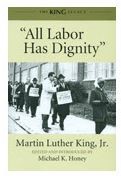 President Reagan signs a bill designating a federal holiday honoring the civil rights leader Martin Luther King Jr. to be observed on the third Monday of January – 1983
President Reagan signs a bill designating a federal holiday honoring the civil rights leader Martin Luther King Jr. to be observed on the third Monday of January – 1983
(All Labor Has Dignity: People forget that Dr. King was every bit as committed to economic justice as he was to ending racial segregation. He fought throughout his life to connect the labor and civil rights movements, envisioning them as twin pillars for social reform.)
Carmen Fasanella retired after 68 years and 243 days of taxicab service in Princeton, N.J., earning himself a place in the Guinness Book of World Records. He started driving at age 17 and, reportedly, chauffeured Princeton Professor Albert Einstein around town – 1989
 November 03
November 03
Striking milk drivers dump thousands of gallons of milk on New York City streets – 1921
Some 5,000 Philadelphia-area public transit workers begin what was to be a 6-day strike centered on wages and pension benefits – 2009
November 04
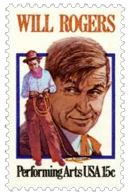 Populist humorist Will Rogers was born on this day near Oologah, Indian Territory (later Oklahoma). One of his many memorable quotes: “I belong to no organized party. I am a Democrat.” – 1879
Populist humorist Will Rogers was born on this day near Oologah, Indian Territory (later Oklahoma). One of his many memorable quotes: “I belong to no organized party. I am a Democrat.” – 1879
Some 3,000 dairy farmers demonstrate in Neillsville, Wisc., ultimately leading to the freeing of jailed leaders of a milk strike over low prices set by large dairy plants. Tons of fresh milk were dumped on public roads, trains carrying milk were stopped, some cheese plants were bombed during the fight – 1933
After a struggle lasting more than two years, 6,000 Steelworkers members at Bridgestone/Firestone win a settlement in which strikers displaced by scabs got their original jobs back. The fight started when management demanded that the workers accept 12-hour shifts – 1996
November 05
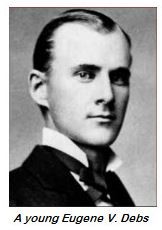 Eugene V. Debs, labor leader, socialist, three-time candidate for president and first president of the American Railway Union, born – 1855
Eugene V. Debs, labor leader, socialist, three-time candidate for president and first president of the American Railway Union, born – 1855
Everett, Wash., massacre, at least seven Wobblies killed, 50 wounded and an indeterminate number missing – 1916
Some 12,000 television and movie writers begin what was to become a 3-month strike against producers over demands for an increase in pay for movies and television shows released on DVD and for a bigger share of the revenue from work delivered over the Internet – 2007
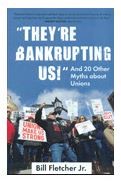 (How familiar do these phrases ring? Unions are responsible for
(How familiar do these phrases ring? Unions are responsible for
budget deficits; they’ve outlived their usefulness; their members are overpaid and enjoy cushy benefits. The only way to save the American economy, many say, is to weaken the labor movement, strip workers of collective bargaining rights, and champion private industry. In They’re Bankrupting Us! And 20 Other Myths about Unions, longtime labor activist and educator Bill Fletcher Jr. makes sense of this debate as he unpacks the 21 myths most often cited by anti-union propagandists.)
—Compiled and edited by David Prosten
